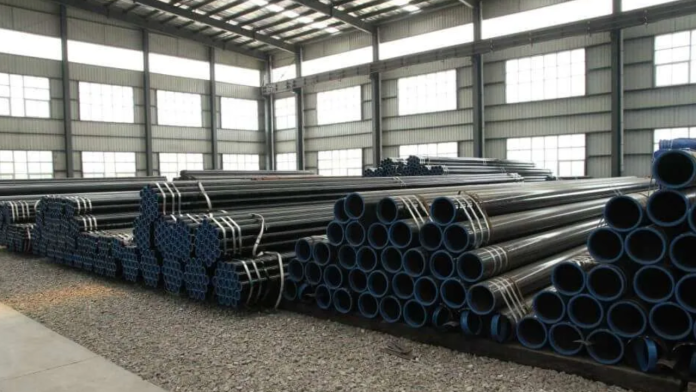Hollow section steel, often known as hollow structural sections (HSS), incorporates metal components with hollow cross-sections, distinguishing them from stable sections. These sections are available in various shapes, including rectangular, square, and circular, every imparting unique structural houses and design flexibility. Hollow section metallic is available in popular sizes and thicknesses, facilitating compatibility and simplicity of integration into projects. Its benefits consist of an excessive strength-to-weight ratio, structural efficiency, and corrosion resistance.
Additionally, hollow section metal is particularly easy to fabricate and set up, due to its standardized dimensions and uniform geometry. Those traits make it a favored preference in construction, infrastructure, and engineering initiatives, where it provides reliable, cost-effective solutions. This hollow section steel finds applications in an extensive variety of industries, such as construction, transportation, and equipment production, contributing to the improvement of sustainable and resilient infrastructure worldwide.
Advantages of Using Hollow Section Steel in Engineering and Construction
This article delves into the several benefits of utilizing hollow-section steel, highlighting its structural performance, layout flexibility, and sustainability.
Strength-to-Weight Ratio
The strength-to-weight ratio of hollow section steel is fantastic, imparting high strength relative to its weight. By utilizing the space inside the section efficiently, hollow profiles gain extra structural performance in comparison to strong sections of equal length. This gain allows for the construction of lighter and more cost-effective structures without compromising on energy or balance. Engineers can lay out load-bearing additives that meet rigorous overall performance necessities even by minimizing material usage and typical weight.
Structural Efficiency
Hollow section steel demonstrates advanced structural performance due to its geometric residences. The hollow move sections distribute material optimally, enabling sections to resist bending, torsion, and compression correctly. Moreover, the uniformity of the section’s geometry allows green load transfer and minimizes stress concentrations. These characteristics bring about extra sturdy and strong structures that could face up to tremendous numbers. Engineers can design efficient and dependable systems whilst optimizing fabric utilization and ensuring structural integrity.
Corrosion Resistance
Hollow-section Steel is well-known for its incredible corrosion resistance, specifically when lined or galvanized. This durability makes it appropriate for outdoor and corrosive environments, decreasing renovation requirements and extending the lifespan of structures. Moreover, corrosion-resistant coatings or treatments also beautify the steel’s resistance to degradation from moisture, chemicals, and atmospheric publicity. By selecting corrosion-resistant hollow section metallic, engineers can ensure the long-term performance and reliability of infrastructure initiatives while minimizing environmental impact.
Design Flexibility
Design flexibility is a trademark of hollow-section metallic, supplying engineers and architects the freedom to innovate and create systems tailor-made to specific requirements and aesthetic preferences. With diverse shapes available, inclusive of rectangular, square, and circular sections, designers can choose the most appropriate profiles for their initiatives. Moreover, hollow sections can, without problems, be changed, mixed, or custom-designed to achieve complicated architectural bureaucracy and structural configurations, allowing the conclusion of particular layout concepts.
Sustainability
Hollow section metallic contributes to sustainability in production through its green use of sources, recyclability, and long-term sturdiness. By way of optimizing material utilization and minimizing waste, hollow sections reduce the environmental footprint of projects. Moreover, steel is pretty recyclable, with an excessive recycling fee, making it a sustainable choice for infrastructure improvement. The long-term durability of hollow section steel guarantees the sturdiness of structures, further enhancing their sustainability credentials.
Ease of Fabrication
Hollow section steel gives ease of fabrication, simplifying production approaches, and on-site construction. Its standardized dimensions and uniform geometry facilitate reducing, welding, and assembly with precision. This streamlines production reduces lead times, and minimizes hard work charges. Moreover, standardized sizes and specs simplify procurement and logistics, ensuring efficient venture transport. On average, the convenience of fabricating hollow section metal enhances creation efficiency and helps with a well-timed project finishing touch.
Cost-Effectiveness
Hollow section steel offers cost-effectiveness at some point in the lifecycle of an undertaking. Its efficient use of substances reduces material prices, even as standardized dimensions and ease of fabrication decrease manufacturing and creation prices. Moreover, hollow section metallic’s durability and occasional upkeep necessities bring about long-term financial savings. By way of optimizing cloth usage, minimizing waste, and reducing upkeep prices, hollow-section steel proves to be a financially prudent preference for engineering and creation initiatives.
Conclusion
Hollow-section steel offers a multitude of advantages that make it a desired preference in engineering and construction tasks. From its superior strength-to-weight ratio and structural performance to its layout flexibility, corrosion resistance, and sustainability, hollow section steel allows the advent of safe, durable, and price-effective systems. By harnessing the advantages of hollow section steel, engineers and architects can innovate and construct the infrastructure of the future while meeting the demanding situations of state-of-the-art evolving built surroundings.














